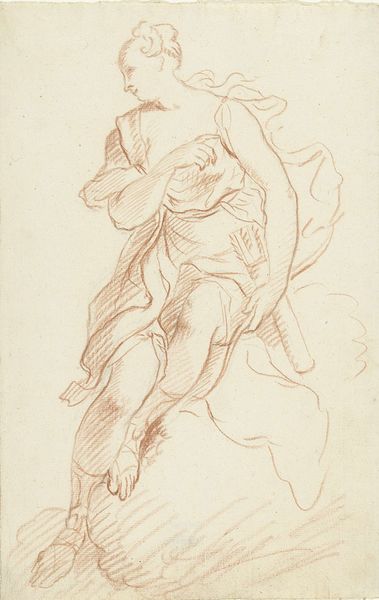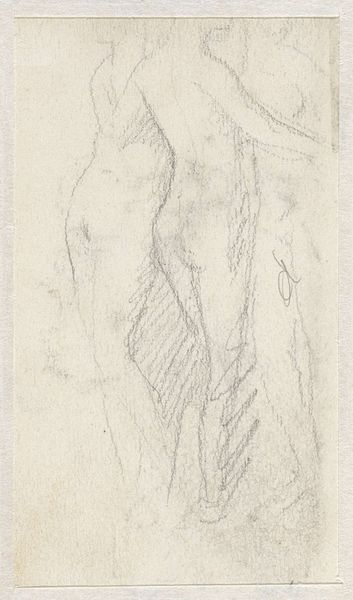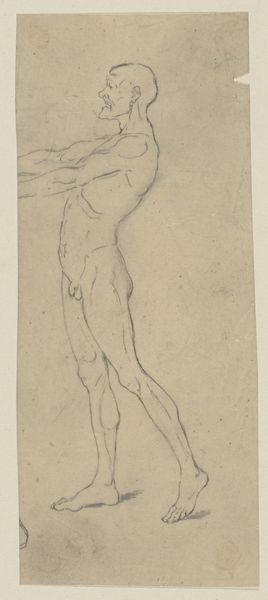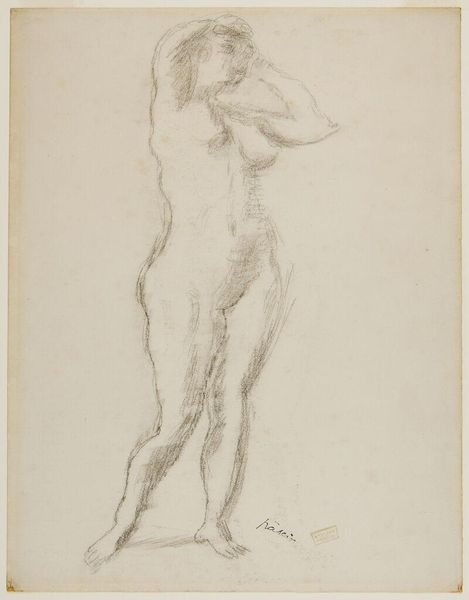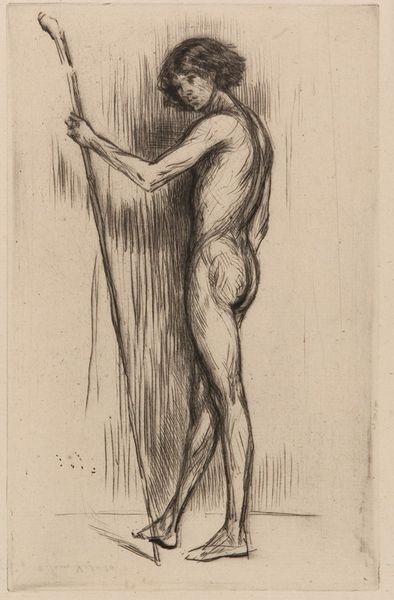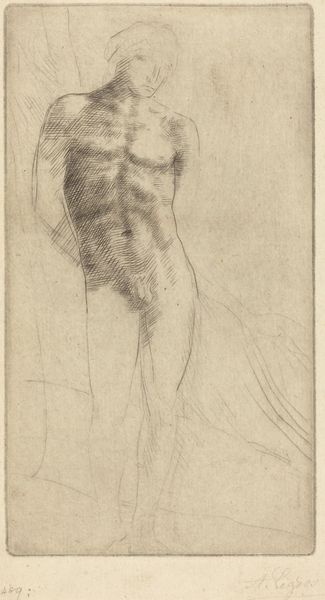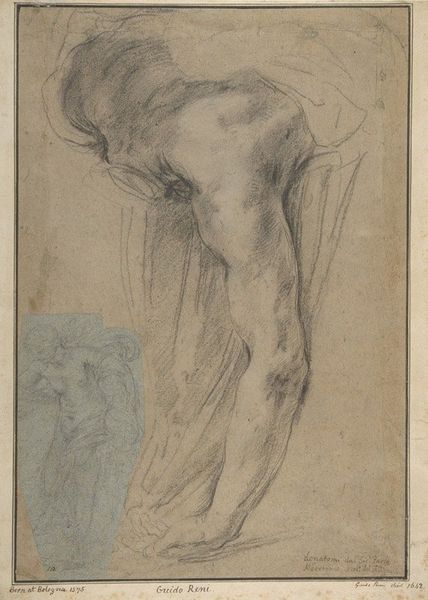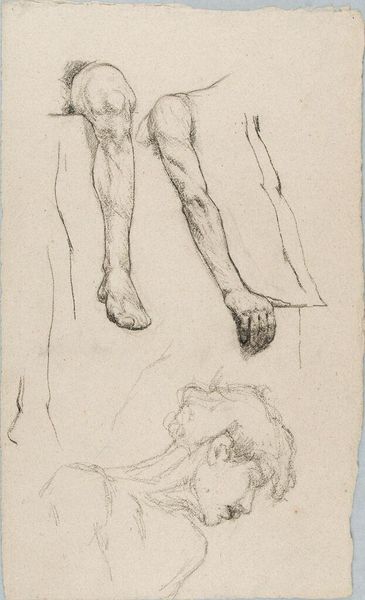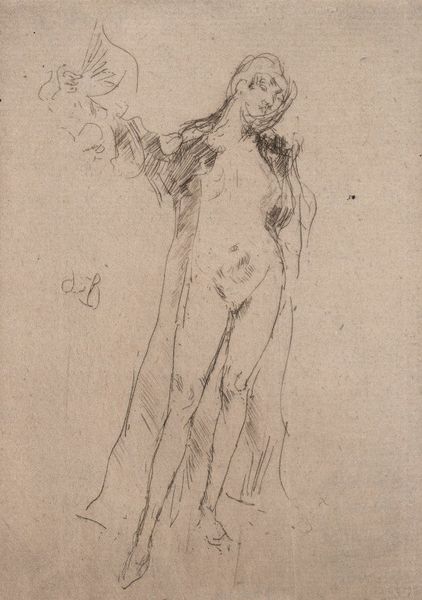
drawing, paper, pencil
#
portrait
#
drawing
#
pencil sketch
#
landscape
#
figuration
#
paper
#
pencil
#
realism
Dimensions: height 278 mm, width 190 mm
Copyright: Rijks Museum: Open Domain
Editor: Here we have Matthijs Maris's "Schalmeiblazer," created sometime between 1849 and 1917. It's a pencil drawing on paper, and what strikes me most is how ephemeral it feels, like a memory fading at the edges. What do you see in this piece? Curator: I see a complex negotiation between tradition and modernity, reflecting the anxieties of its time. Maris was working amidst significant societal shifts, industrialization, and evolving class structures. The lone figure playing the shawm, an archaic instrument, suggests a yearning for a pre-industrial past, a potential critique of the present. Editor: So the figure is like a symbol? Curator: Exactly. He is possibly a symbol of resistance, clinging to traditional culture in the face of encroaching modernity. Notice also how the figure's body appears almost classical in its form, recalling earlier artistic conventions. Yet, the unfinished nature of the drawing subverts any romantic idealization, revealing a tension between the old and the new. How do you think this tension reflects on the artist and society? Editor: It’s like he's caught between worlds, admiring the past but aware that it's slipping away. Is it possible this could also point towards a critique of colonialism, given the dates? Curator: Absolutely. Maris was part of a larger artistic and intellectual milieu grappling with questions of identity, cultural heritage, and the legacy of colonialism. His artwork offers an opportunity to critically engage with how the echoes of that era reverberate into the present. What do you make of its style? Editor: Well, knowing Maris was part of the Hague School movement, it makes me think of their emphasis on capturing atmosphere and mood, making it almost like a melancholic statement about change. Curator: Precisely! The beauty of art is that it invites us to critically reflect upon power, history, and identity. Editor: I definitely learned a lot about how this work mirrors broader social tensions, all packed into what initially seemed like a simple drawing. Curator: Indeed. It reminds us that art is always in conversation with its time, revealing layers of meaning when viewed through a critical lens.
Comments
No comments
Be the first to comment and join the conversation on the ultimate creative platform.
